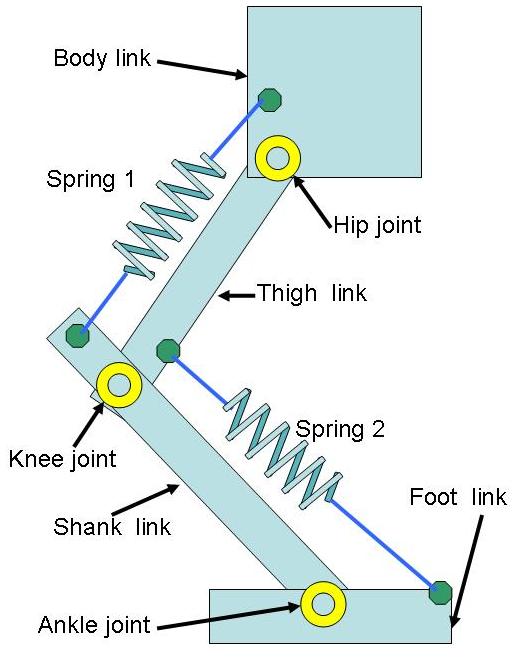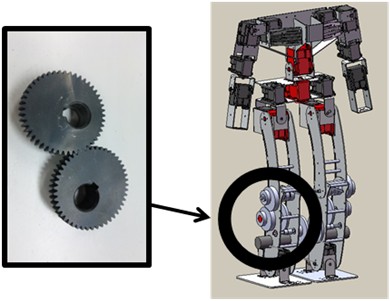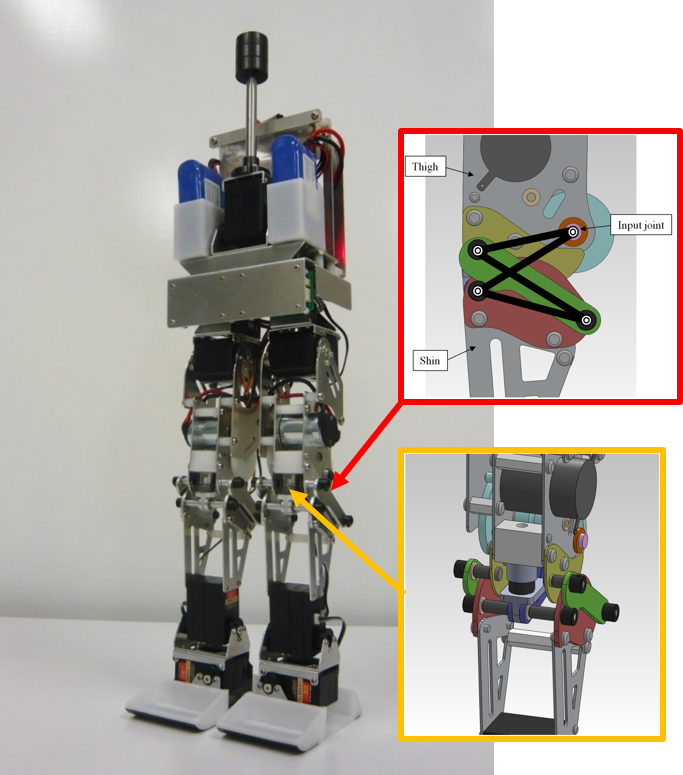![[PukiWiki] [PukiWiki]](image/logo.png)
電気通信大学 明・佐藤研究室 |
Research and development of a high athletic performance humanoid robot Summary Research and development of a high athletic performance humanoid robot At Ming Lab, we research and develop high athletic performance humanoid robots, and there are various approaches. In order to apply the golf swing robot system to a humanoid robot, we research the development of a variable speed reduction mechanism used to reduce the reduction ratio of the actuator used in the lower body of the robot, a mechanism with a stopper added to the variable speed reduction mechanism, and a research of a load-sensitive continuously variable transmission mechanism that has applied a variable speed reduction mechanism. In addition to research related to variable speed reduction mechanisms, we also develop leg mechanisms that allow mutual use of torque between joints, development of foot mechanisms with multiple arches, and research on jumping motion planning using simulation software. Recently, as a new research, we are also dealing with a new research theme of developing a two-joint mechanism with nonlinear characteristics based on the human gastrocnemius system. In this way, Ming Lab conducts research on real machine manufacturing and simulation with the aim of improving the athletic performance of humanoid robots from various viewpoints. Development of a leg mechanism that can mutual use the torque between joints
In this research, we aim to develop a low speed reduction robot that can effectively use the inertial force and the reaction force of the stopper to realize smart and dynamic motion. We propose a spring mechanism that guarantees the static torque generated by the gravity of a robot with a general electromagnetic actuator and enables mutual use of drive torque between joints. As a result, the output capability can be improved without increasing the reduction ratio of the joint.
Two springs are mounted on the upper and lower limbs as shown in the figure. Torque can be mutually used between the three joints in the direction of lifting the legs in the swing legs and in the direction of state lifting in the grounded legs. Development of knee mechanism using non-circular gear reducer
In this study, we propose a non-circular gear variable speed reduction mechanism that changes the reduction ratio of the knee joint according to the driving torque required for the knee joint when the biped robot performs a bending leg motion. As a result, the torque required for the knee joint actuator can be reduced, and the reduction of the knee joint reduction ratio can facilitate the use of external forces such as inertia.
A non-circular gear as shown in the figure is used to drive the knee joint. Since this gear is non-circular and the center of rotation is not at the center of the gear, the reduction ratio can be changed according to the joint angle. Development of knee joint mechanism with stopper
Human joints have the characteristic that non-linear reaction force occurs depending on the joint angle. By incorporating a mechanism (stopper) that mimics these characteristics into the joints of biped robots, we will improve the robot's athletic performance.
The stopper is composed of springs, and a nonlinear reaction force can be obtained by multiple springs. There are two types of stoppers developed in this study, one using leaf springs and the other using torsion springs. In both cases, the number of springs that produce a reaction force changes depending on the joint angle. Therefore, pseudo-nonlinear force is applied to the joint. Development of knee structure using variable deceleration cross link and stopper mechanism So far, we have confirmed that the torque required for the knee joint actuator can be reduced by changing the reduction ratio of the actuator using a non-linear gear or a four-bar link. Therefore, we introduced a cross-shaped four-bar link to the knee joint using the human body structure as a hint, and realized a change in the reduction ratio of the actuator and a wide range of motion of the knee joint. Furthermore, by introducing a stopper mechanism at the knee joint, torque can be assisted and it is possible to perform stretching walking with one foot. |


